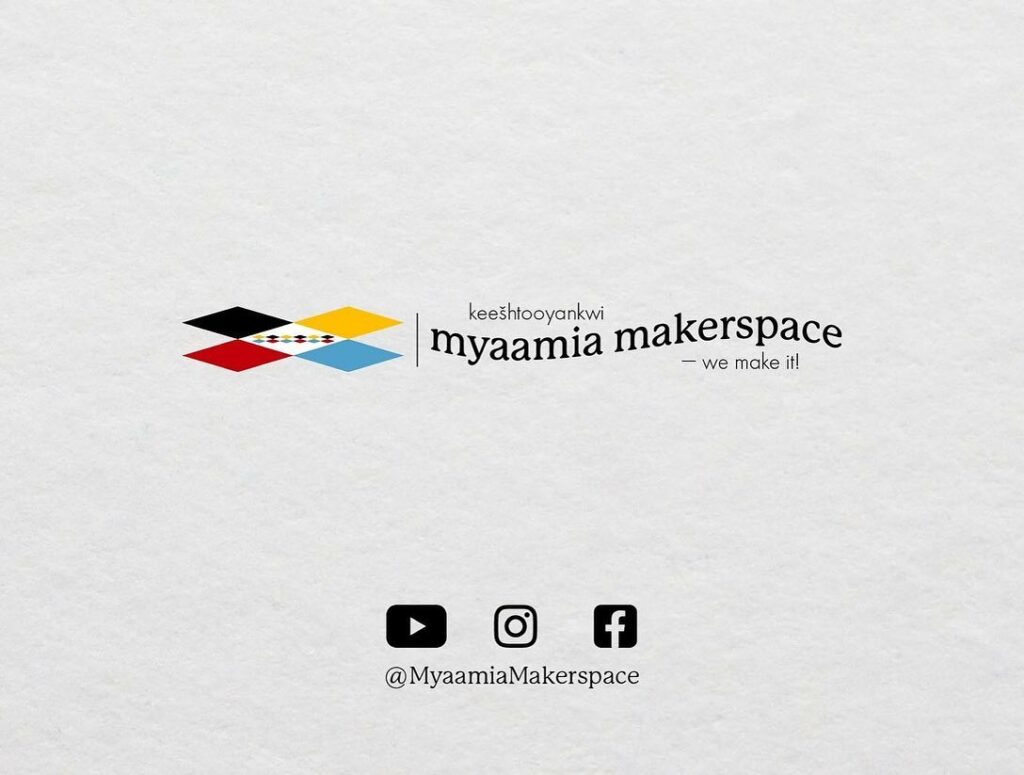
How to Contact
Phone: (918) 541-1300
Mission Statement
Miami Tribe of Oklahoma National Register of Historic Properties
The Tribal Historic Preservation Officer (THPO) is responsible for the identification and maintenance of culturally significant properties pertaining to the Miami Tribe of Oklahoma. The THPO nominates these properties to the United States National Register of Historic Places and the Miami Tribe of Oklahoma National Register of Historic Properties.
Properties on the Miami Tribe of Oklahoma National Register of Historic Properties
The Drake House – siipiihkwa awiiki (River Woman’s home) was built circa 1885 as part of the allotment of Miami lands after relocation from Kansas for Miami Tribal member Jane Drake. As one of the few remaining Miami allotment houses in Ottawa County is important both as a physical structure and what it represents to the history of Miami people.
The Drake House was the first property to be listed on the Miami Tribe of Oklahoma National Register of Tribal Historic Properties in 2006. Rededication of the siipiihkwa awiiki took place in 2013 with the addition/restoration of the north wing of the house that was lost to a tornado in the early 1900s. The restoration project included a new lower-level living room area with a stone fireplace and four upper level bedrooms.
Jane Drake was born in the late 1840s, probably in Kansas, as her family arrived in Kansas between June and December 1847. Her mother Oonseentihkwa was born in 1818 and her uncle John Pigeon was born in 1826. Oonseentihkwa was likely the daughter of Captain Pigeon and Mary Pigeon, born in 1803. At the time of Removal, this family fled north from their home in Turtletown where Captain Pigeon was one of Mihtekia’s (Coesse) headmen. They went to Kansas the following year. Jane received an allotment in Kansas and married Milton K. Drake on that land in 1866. Milton and Jane had twelve children, eleven of whom received allotments in Indian Territory. The youngest son of Milton and Jane, and the only child not to receive an allotment, Patrick was only twelve years old when he died from typhoid fever in 1909.
The Drakes built what is now known simply as “The Drake House” on Jane’s parcel around 1895, and the family continued to farm the land until the Great Depression. Milton died in a buggy accident in 1905, and Jane fought to keep the farm successful until her death in 1918. Eventually, the farm had to be sold, but the house remained and was bought and restored by the Miami Nation in 2005. (“Allotment #16: siipiihkwa Jane Pigeon Drake,” keehkaapiišamenki: A History of the Allotment of Miami Lands in Indian Territory. Miami, Oklahoma: Myaamia Publications, 2015. p. 67.)
Today the Drake House serves as a guesthouse for tribal members and visitors to our tribal community. It also serves as a residence for visiting educational groups from Miami University in Oxford, Ohio who assist the Tribe with various research initiatives.

One of the eldest Tribal members to receive an allotment, David Geboe was born in kiihkayonki (Fort Wayne). As a teenager, he was likely among those removed from Indiana in 1846, along with his mother Mary Ann, and possibly some of his siblings and his mother’s siblings. While in Kansas, he first married Mary Abner. They had three sons, Joseph, Simeon, and Ora. Joseph and Ora likely died as children, and Simeon died at 29 years old in Indian Territory. After a divorce from Mary Abner, he married Mary Bridget Leonard and had a daughter, Minnie Mae Geboe.
David Geboe was an integral leader of the Myaamia in a time of uncertainty and upheaval. Along with several other leaders, he traveled to Washington, D.C., to negotiate with the federal government during the treaty period. He grew into a leadership role and was elected chief in 1886 in Indian Territory. After his tenure as head chief, he continued to serve as second chief until his death in 1899. (“Allotment #4: kitahsaakana David Geboe,” keehkaapiišamenki: A History of the Allotment of Miami Lands in Indian Territory. Miami, Oklahoma: Myaamia Publications, 2015. p. 55.)
Mary Bridget Leonard was born to Mary Roubidoux Leonard in Adrian, Michigan. Her family fled north rather than be removed from their Indiana homeland but then moved west to join their relatives in Kansas in the 1860s. After settling on their allotment, David Geboe became known as a successful farmer, and “Grandma” Geboe was an enterprising businesswoman. She took in laundry to earn money, and at one time created a cattle dip and charged ranchers by the head to run their cattle through.
Chief Geboe’s allotment land and farmhouse passed down to his daughter Minnie May Trinkle and her husband Joseph. Minnie was born in Kansas but was likely just an infant when the Myaamiaki relocated to Indian Territory. Minnie and Joseph were married in 1888, and they had three children before his death in 1894. They were Mary “Pearl” Trinkle Alsbaugh, Mabel Trinkle Olds, and Ernest Trinkle. Minnie was only 38 years old when she passed away in 1900. Though the two girls were married by then, Ernest was fifteen and remained in the care of his grandmother Mary Geboe.
Five generations of the Geboe family continued to live in the home until the late 1990s when the Nation purchased it and restored the original portion of the house. The restoration of both the interior and exterior of the home replicates the physical appearance of the house as it would have appeared in the early years of the allotment era. Development of the adjoining property includes both ecological/ecosystem restoration and property enhancement. The Geboe House, in addition to the Drake House, represents one of the few remaining Miami allotment-era houses in Ottawa County.

The house, with a ballroom on the top floor, was one of the finest in Miami during that era. Many unique pieces in the home were imported during construction, including crystal chandeliers from Austria. The family hired a decorator who accompanied them to Kansas City to choose proper furnishings, which included a baby grand piano.
After the death of Mr. McBee, the home was sold to the U.S. government, which made apartments to house members of the armed forces during and after World War II.

The Ethel Miller Moore Cultural Education Center/Longhouse sits on a picturesque 4.5-acre parcel of Esther Miller Dagenett’s 1890 allotment just west of downtown Miami, Oklahoma.
Esther Miller was the youngest child born to Akima Mihtohseenia (Chief Thomas Miller) and Waapikihkihkwa. Her mother died when she was about nine years old. She graduated from Carlisle Indian School in 1889 and Gem City Business College in 1891. Esther married Charles E. Dagenett in 1892. She was a teacher and matron in the service of the Department of Indian Affairs education system for thirty years, working in such places as Chilocco, Muskogee, Kiowa, and Seneca Indian Schools. Charles and Esther both worked for many years in the western states, including Arizona, New Mexico, and Colorado. They had one daughter, who died at birth. Eventually, they divorced, and Esther moved back home to Miami to be with her family.
At her death in 1936, Esther’s allotment land was inherited by her nephews and niece Ethel Miller Moore and passed through the family to Ethel’s son Lewis Ira Moore who donated an acre of it to the Miami Tribe in memory of his mother, and the Ethel Miller Moore Cultural Education Center was built on that property.
Mr. Moore was elected Second Chief of the tribe in 1981 and assumed the position of Chief in 1982.
Because of the history of the Miller Moore Family and the property, the Ethel Miller Moore Cultural Education Center/Longhouse is recognized as being of immense historic value to the Miami Tribe. (“Allotment #2: aahsansamohkwa Esther Miller Dagenett,” keehkaapiišamenki: A History of the Allotment of Miami Lands in Indian Territory. Miami, Oklahoma: Myaamia Publications, 2015. p. 53.)
Located within the Ethel Miller Moore Cultural Education Center is the Myaamia Makerspace, where ‘keešhtooyankwi’ - we make it! The Makerspace is a space where our community can gather for whatever they need to make or learn. Please visit the Makerspace Facebook or Instagram pages for more information.

